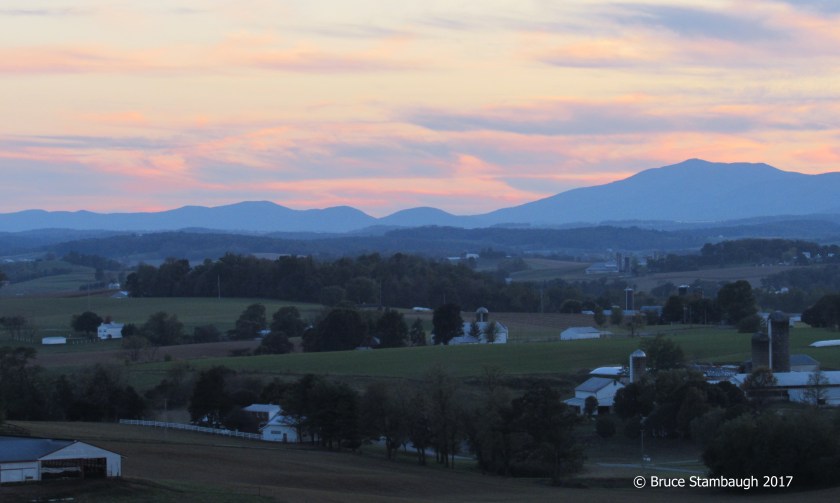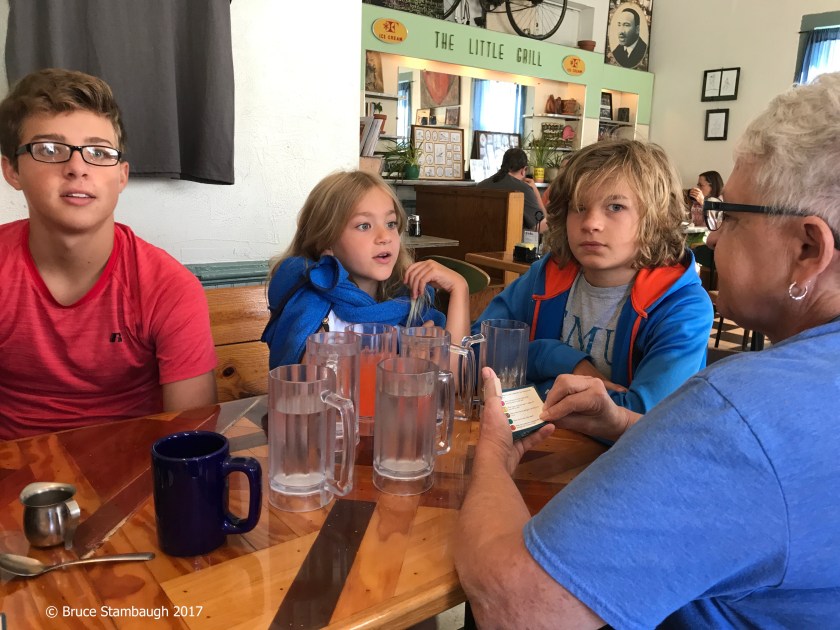I was in junior English class in the early afternoon of November 22, 1963. Jean Wood Giltz, our teacher, was in the midst of projecting one of her mesmerizing English lessons when, without any announcement, the room’s loudspeaker came on. She stopped her lecture and stared at the brown box high on the wall by the classroom door.
The class, 30 or so pimpled pupils, sat attentively in straight rows of desks and chairs so common in that educational era. We seemed as mystified as our astute instructor, who had the largest vocabulary of anyone I had ever met.
It was clear that the voice coming across the public address system was being piped through a radio. The announcer was describing details of a scene that made no sense. The students looked around in dismay, not that we were irritated that the lesson had been interrupted. But this noise was annoying, not only to us, but to Mrs. Giltz as well.
After less than a minute of this rattling on by the reporter, Mrs. Giltz asked Jimmy, a student who usually slept through her class, to go to the office to have the speaker system turned off. She figured that someone in the principal’s office had hit the wrong switch.
As Jimmy reached the door, the announcer said, “And repeating, the president has been shot.” The class immediately went silent. Without being told, Jimmy made a slow U-turn, and returned to his seat. He listened to the report trying to piece the fragments of information together like the rest of us. Mrs. Giltz slumped to her chair behind her big wooden desk.
The announcer went on reporting this breaking news from Dallas. Someone had shot the president and that he had been taken to a hospital. Little else was known.
As abruptly as the broadcast had been turned on to every classroom in the school of 1,200 students, the live feed was suddenly stopped after about 20 minutes. The principal’s voice replaced the reporter’s.
I don’t remember his exact words, only the message. Because of the national tragedy, school was being dismissed early. We went to our lockers, and filed out quietly to our buses. No one said a word.
When I left the school, all I knew was that President Kennedy was critically injured. We boarded the buses and headed out. Because I lived less than a mile from the school, my stop was the first. I rushed into the house, a small brick bungalow in Canton, Ohio, and turned on the black and white television. I tuned to Channel 3 to watch Chet Huntley and David Brinkley. Our family watched them faithfully as if they were relatives to be respected.
In that short timespan from school to home, the announcement had been made that John Fitzgerald Kennedy, the 35th president of the United States of America, had died. Huntley and Brinkley were visibly moved, and I cried, too. I couldn’t fathom why anyone would want to kill the president. He had projected so much youth and hope for the future. He loved the press, and held frequent press conferences, which were more like classroom discussions. He laughed and smiled, and tossed the football with family members. He had two small children and a beautiful wife who was shyly gregarious, unassuming, but confident and classy in her demeanor and dress.
I was crushed. We all were, even my father, who didn’t vote for Kennedy because he was a Catholic. Our cousins were Catholic and we would gather with them for Thanksgiving the very next Thursday. Yet Dad didn’t like the president because he was Catholic. I never understood his thinking in that regard. Never.
Initially, I was home alone. The rest of the family filtered in, my younger brother and two sisters from school and Mom and finally Dad came home from work. My older brother was at college. We were glued to the TV for any breaking news, just the way we had been a year earlier. We had watched together as the young president described the Cuban Missile Crisis to the country.
As scary as that event was, this was much worse. With the death of the president, it was as if the life had been sucked out of all of us.
We watched as Air Force One landed in Washington, D.C. later that evening. The casket was awkwardly lowered from the plane to a waiting hearse. I remember how Jackie had to literally jump down to the tarmac from the truck lift that carried the body of her husband. I thought that so thoughtless of those who were responsible for watching over such a graceful and gracious woman.
The shock of the assassination wore on us all. Without the instant communication of today’s world, we were dependent on the trusted news people of the time to keep us informed. Details of the shooting, the capture of Lee Harvey Oswald, the accused assassin, and the funeral arrangements kept us in front of the TV. Commentators openly discussed how it was possible that Oswald could have done such a thing. Eyewitnesses declared there was a second shooter from the infamous grassy knoll. Everything was confusion.
The events of the next few days unfolded on the screen before us. A balm seemed to settle over the entire nation. Things got really complicated, confusing, suspicious, surreal, even though I didn’t know that word at the time. We watched live as Jack Ruby stepped right in front of the TV cameras and shot Oswald in the stomach as if it were a Hollywood movie. How did that happen? Why did that happen? How did Ruby get into the police station? Why did the police make Oswald so public, having him walk that gauntlet in the open?
The entire affair got more and more murky. What was going to happen next? I don’t remember being so much afraid as numbed by this ugly chain of events. Indeed, the lingering question was, “Were they connected?” I was a sad and confused young man.
Monday was a national day of mourning, with the funeral services, the walk to Arlington National Cemetery and the burial. Two images are forever fixed in my mind. One was little John-John, the president’s son, stepping forth and saluting the passing flag-draped casket pulled on a horse drawn caisson. The other was the line of world leaders walking along, heading the parade of mourners. I particularly remember Charles de Gaulle, the President of France, towering above the others.
Finally, it all got to me as an immature, naïve teenager. I couldn’t take the emotion of it all anymore. I called a few neighborhood friends, and soon we had a pickup game of touch football going in a neighbor’s field. It felt good to again feel good, to forget the troubles and trials of the world, and just play with kids your own age. The game meant nothing, and yet it meant everything. I don’t recall who won or what the score was. I just remember the relief of being young again with no cares in the world. And for the record, none of the dozen or so guys on the field with me even mentioned the events of the last few days.
Once the game was over, however, I dreaded going home. I knew it would be back to reality. The days of Camelot were over. It was a hard reality for a teenager to accept, and one I have endured but never forgotten for half a century.
Bruce Stambaugh
© 2013






















You must be logged in to post a comment.